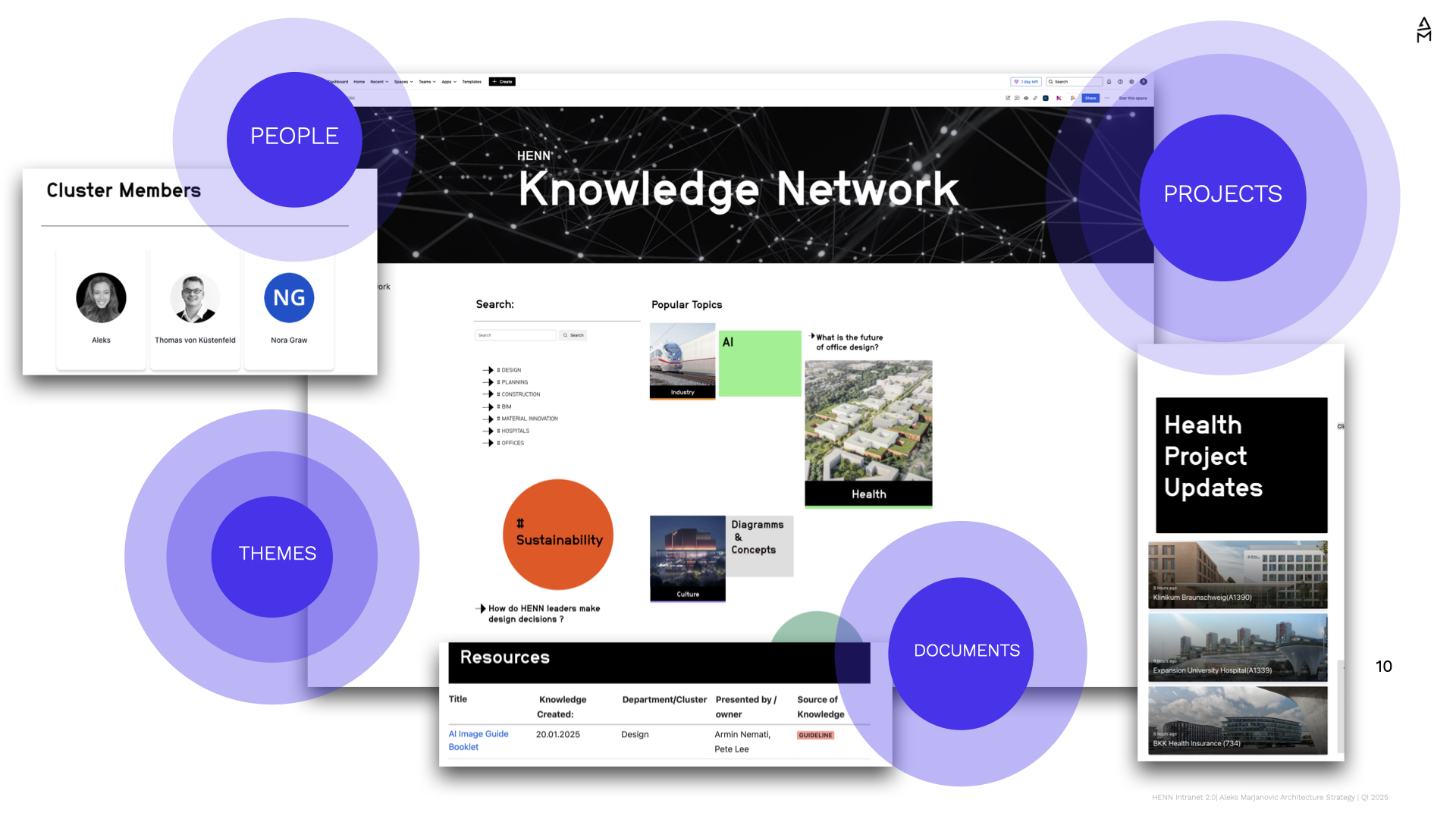
How might we create a knowledge system that serves as a single source of truth — not just for storing information, but for fostering continuous architectural innovation?
1. Align
No tool succeeds without a clear purpose. We began by setting a vision, diving into user needs, and mapping out exactly how the tool would create real value. This ensured we weren’t simply digitizing for the sake of it, but making work easier and more efficient.
2. Design
With a solid foundation, we explored different structures and UX approaches, pulling insights from competitor analysis. Every decision was tested against core user stories and the benefits identified in Phase 1—ensuring function and usability went hand in hand.
3. Adopt
A tool is only as good as its adoption. We built a clear ROI case to get leadership on board while identifying key employees to champion the change. The final step? Polishing the design and communication to make the transition as seamless as possible.
1.Align
Analysing requirements, understanding goals

Envisioning a knowledge tool of the future
Every great tool starts with a great question: What if knowledge-sharing wasn’t a chore, but a seamless part of daily work? Over bi-weekly meetings, we worked with managers to stretch their thinking and set the scope. We explored three futuristic scenarios, and the team chose The Generator—a dynamic, open platform that fosters exchange and cross-project connections. Along the way, our "What if?" exercises crystalized the core strategy: inspire knowledge generation & sharing, enable cross-polination, and enhance efficiency of project teams

bringing it together : benefits mapping
With user needs (framed as needed change) mapped out on the left and the three high-level strategies on the right, we brought it all together in a benefits realization mapping session. The user needs and strategies were then connected through project and business benefits, which we carefully prioritized. To ensure continued focus, we set up a system for regular reviews, with a dashboard keeping everything transparent. (For more on how this approach drives long-term change, check out my article here).

Competitor Benchmarking
We researched intranet setups at three large architecture firms and three non-architecture firms, including interviews with current and past employees, to gauge the industry’s status quo. The tools and designs varied widely, but a trend emerged: Agile, forward-thinking competitors leaned towards a decentralized networked system. What would be the right direction for us?

2.Design
prototyping and testing
Having collected a number of user stories throughout the process, we had a project backlog & roadmap ready. For each of the 5 sprints, we would select the top-priority requirements and work through them for the following 2-4 weeks.The sprints cycled Between defining (and refining) requirements creating the UX, designing the UI and testing it out with users.

3.Adopt
Getting everyone on board

ROI
A simple ROI calculator was created and presented to upper management, demonstrating the potential time savings and their direct translation into millions of euros saved annually. Even with the highly conservative estimate of the system saving just 30 minutes a day for half of the staff, the results clearly highlighted its value.

Finding champions
Finding champions for the tool was crucial, and most of them were already involved in the process. They received additional training and were integrated into the communications campaign, helping highlight which questions the system could answer.
Final result
The end product was a functional prototype within Confluence, featuring real content and the company's CI. Knowledge became visual and interconnected, offering easier access and a more intuitive learning experience. The beauty in it is that this is just the beginning. The system will only keep growing along with the employees knowledge sharing culture!
